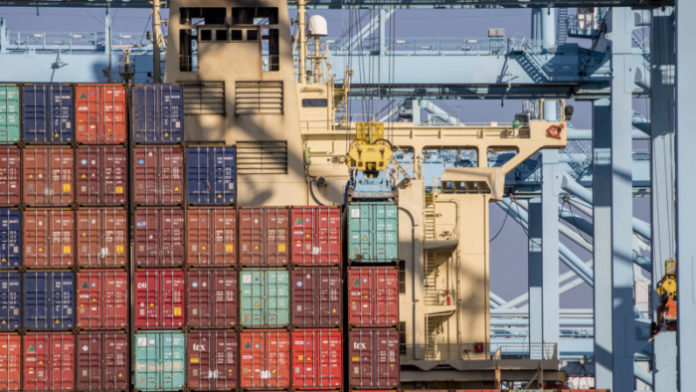
-
An oversupply of containers is contributing to a slide in second-hand box market prices, Container xChange says in a report
-
The tech platform says the supply glut that’s pressuring box prices stemmed from panic orders for new containers in early 2020 amid rising demand, port congestion and box capacity being held up too long at ports
-
The report says easing supply chain disruptions in coming months should lead to higher container productivity and a structural surplus of boxes
An oversupply of containers is contributing to a slide in second-hand box market prices, according to a technology company that offers a container trading and leasing platform.
“The current …oversupply of containers is a result of a series of reactionary market disruptions that began soon after the outbreak of the pandemic in early 2020. With the rise in demand, congestion at ports increased and the container capacity was held up for a considerably long period of time. ” said Christian Roeloffs, co-founder and CEO of Container xChange, a tech platform that simplifies the logistics of container movement.
“This led to the panic ordering of new boxes at record levels. With time, as markets reopen and demand softens, the oversupply is a natural outcome of demand-supply forces balancing at new levels.”
Container xChange’s analysis of the price trends of 40-foot standard high-cube containers in the European ports of Hamburg, Antwerp and Rotterdam from August 2021 to date shows the average prices on the three markets have all declined.
From a steady US$4,000 until October 2021, container prices in Hamburg slipped to US$3,455 this month. In Antwerp, the price was around US$4,200 in August 2021 and fell steadily to US$3,455. Rotterdam box prices were around US$4,175 in August 2021 and slid to US$1,741 in July 2022.
(More details on pricing and leasing rates, container availability fluctuations across China, India, Indian Subcontinent and Middle East in the monthly container logistics report by Container xChange at https://www.container-xchange.com/reports/monthly-container-logistics-update/)
Freight rates have fallen about 20% since January 2022. Container xChange said these will continue to fall gradually, but ruled out a massive decrease as the underlying disruptions in the supply chain are still there.
Related read: Global container prices up 5.4% in May
Fresh data published by Drewry indicates more than 6 million TEUs of capacity in the global container fleet. Container xChange said the oversupply will obviously lead to a need for more depot space.
“In a scenario where we assume that the global supply chain disruptions will fade away with time, there will be higher box productivity and we will need fewer boxes per unit of cargo,” Roeloffs said.
“As we witness the easing of supply chain disruptions in the coming months, it will lead to higher box productivity and a structural surplus of containers. If we also see further softening of demand, this will increase the supply of containers available for cargo. There is a high possibility of a scenario where the equipment capacity will not get soaked” he said.
“This situation will lead to tighter depot space, carriers will rush to get rid of their older equipment, second-hand container prices will continue to slide gradually only to reach a new normal level and the new market will dry up.”
Container xChange said the situation can be studied from the perspective of demand and supply. If demand for containers falls, the supply will increase. Also, price is a function of demand and supply. If demand falls and supply increases, prices will fall. That’s happening with container prices.
The report cited US Census Bureau data that showed US imports had decreased 2.4% between March and April, purchases of goods went down around US$100 million as higher imports of industrial supplies and materials (up US$1.8 billion) were offset by lower imports of consumer goods (down US$1.5 billion).
In the long run, ocean freight demand is forecast as a multiplier of global GDP growth. If global GDP doesn’t fall by, for instance, 5%, global demand for shipping capacity won’t plummet.
“To sum up, we foresee a significant rise in the pent-up, peak season demand. This will likely keep container prices potentially stable in the short term, as we inch closer to the peak season,” Roeloffs said.
“What remains to be seen is how the geopolitical circumstances and the pandemic- induced lockdowns (for instance, in China) play out in the coming months.”




